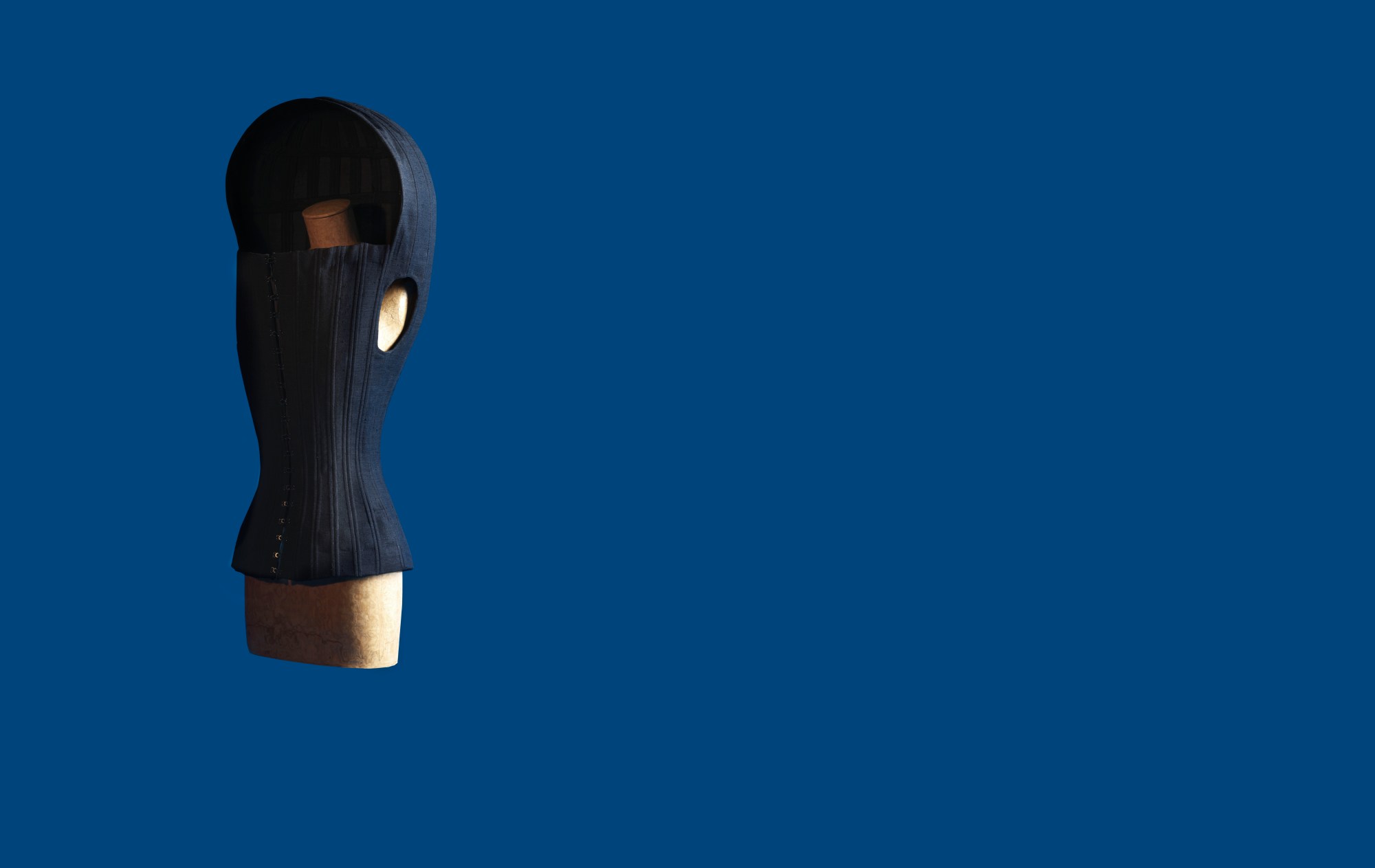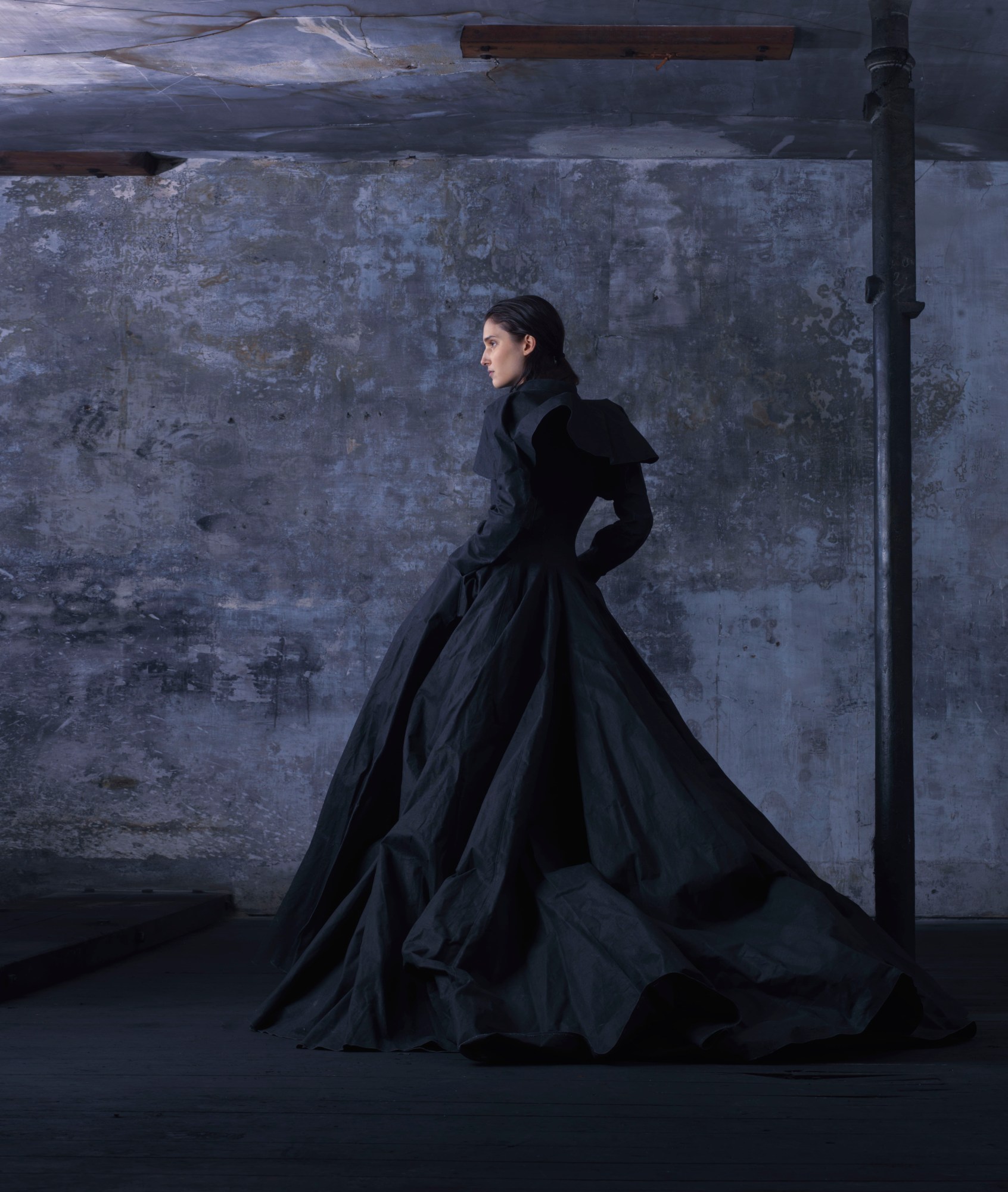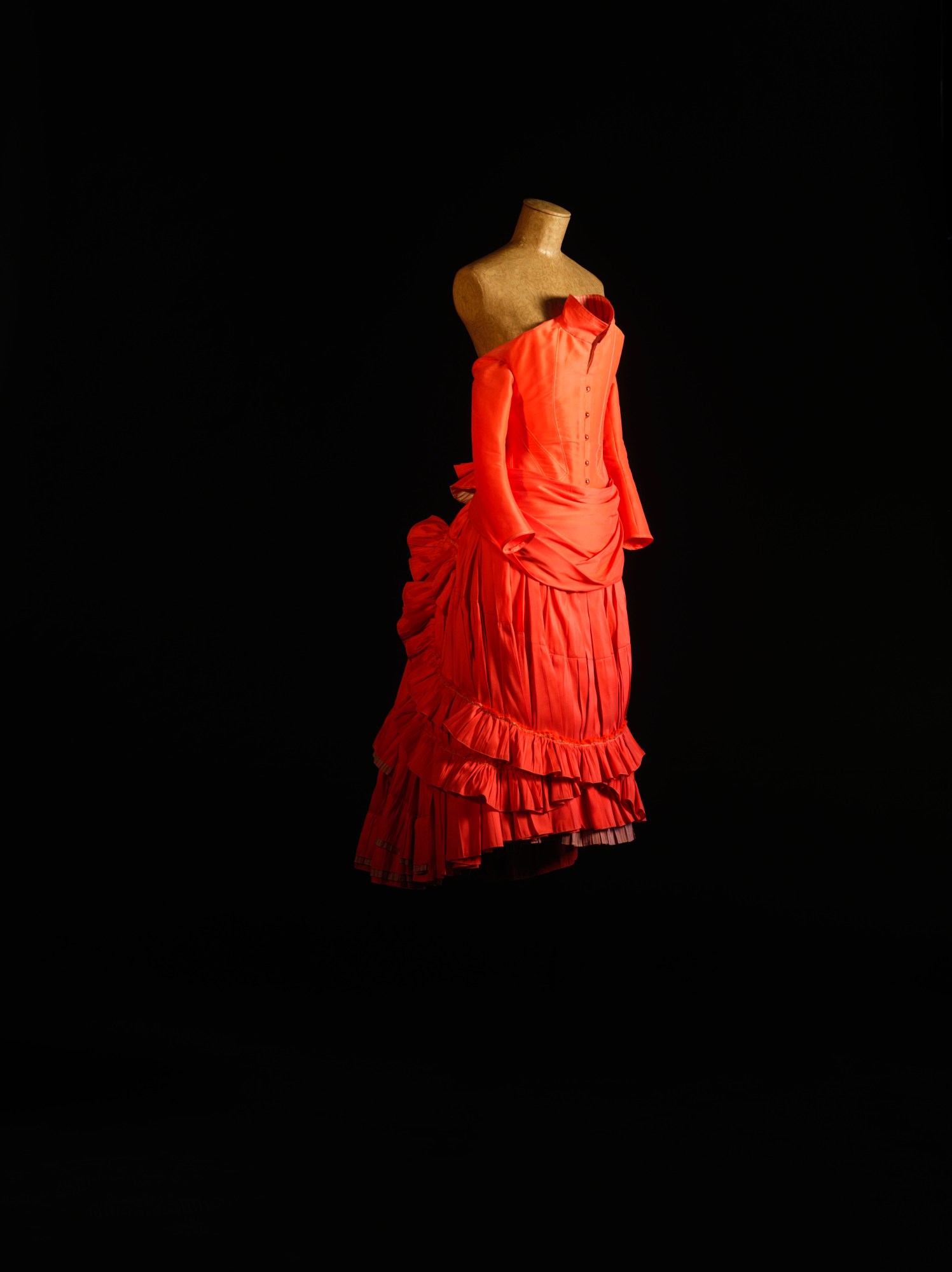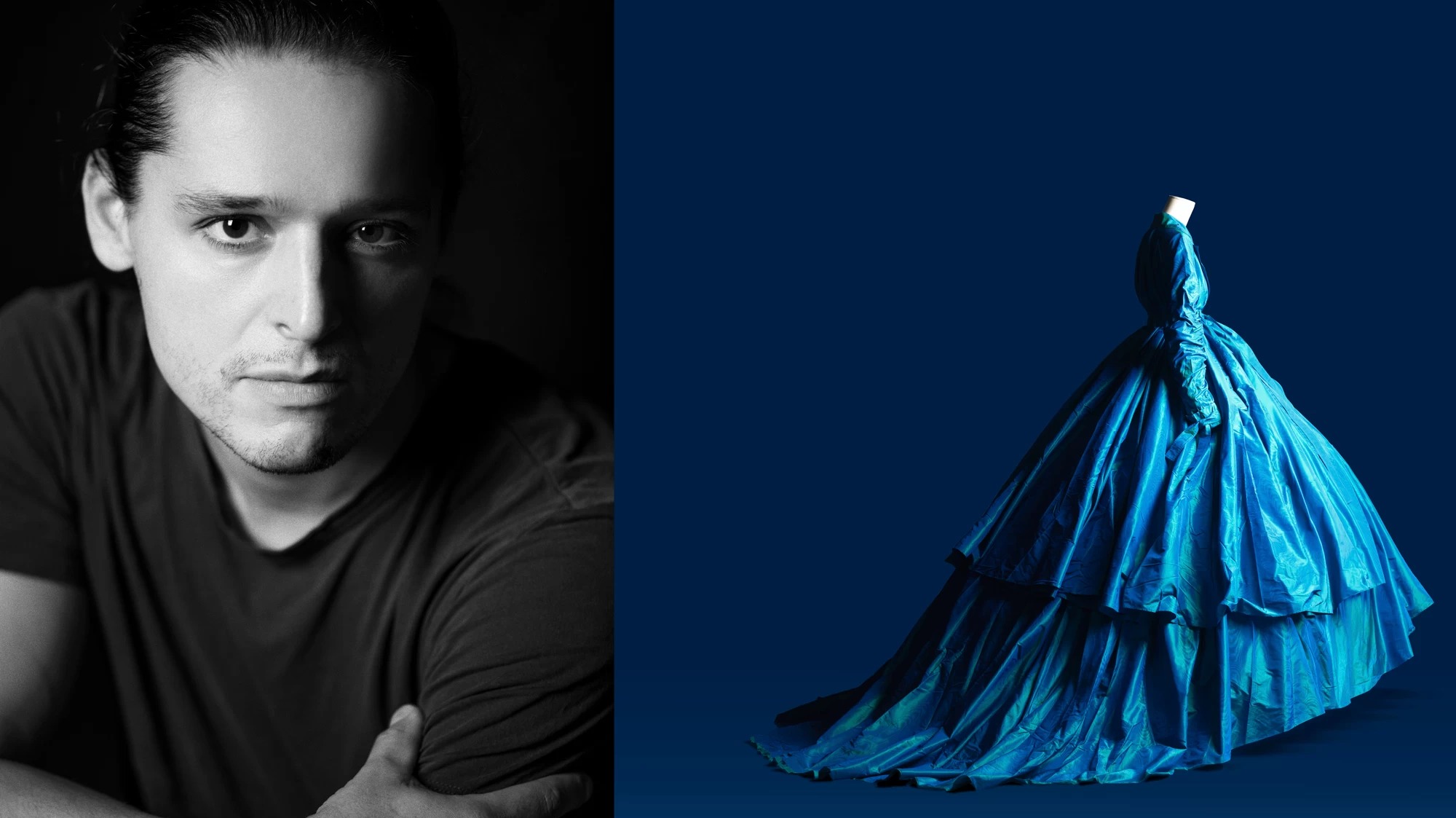This article originally appeared on i-D US.
Olivier Theyskens’ signature is sumptuous fantasy balanced with solemn formal rigor. The designer will inaugurate “In Praesentia,” a rich carte blanche display of his imaginative universe, at Cité de la dentelle et de la mode, a.k.a. the Museum of Lace and Fashion, curated by Lydia Kamitsis (June 15-January 5). Located in the northern French city of Calais, the venue has previously featured exhibitions on Hubert de Givenchy, Cristóbal Balenciaga, and Iris van Herpen.
In successions of theatrical vitrines, Theyskens silhouettes mix with in-house historical garments: pairing forms, colors, and materials across decades and even centuries. The selected pieces are beautifully mixed with vintage industrial tools — a lace press, patinated bobbin boards, trestles, registries of lace samples — that double as sculptural totems. The show provides an authentic and striking tribute to Theyskens’ recurring creative obsessions.
The Belgian designer precociously started his own label in 1997, after quitting fashion school. Over the next two decades, he fashioned lavish gowns at Rochas and Nina Ricci, then contemporary separates for Theory. Theyskens revived his namesake line in 2016 and, since February, his Paris atelier has been headquartered in a stunning historic building. The ground floor was built in the 19th century, for an aristocrat during the French Directory; upstairs, amidst architecture from a later period, he and his team work in an Art Nouveau jewel with dark wood panelling and stained glass windows (The setting is pulled down to earth thanks to schoolchildren screeching through recess in an adjacent courtyard).
Theyskens, sporting a black T-shirt that read “Dirty Mind” on one side, and “Clean Oceans” on the other, discussed his insatiable appetite for drama, his wariness of big brands re-writing fashion history, and the pleasures of deconstructing his own work.
You had an exhibition in 2017-2018 at MoMU in Antwerp. How will this show be different?When the MoMU asked me to do a retrospective, I always imagined it as something you do at the end of your career — and I feel like I’m in the middle! That exhibition was purely chronological; we were featuring absolutely every show I ever did and some key outfits. The visitor would see my evolution collection by collection, plus some fashion sketches, photographs, and personal documents. It was a very classical approach to showing one designer’s path. Soon after the exhibition ended, I got this solicitation from the museum in Calais. I believe by seeing the exhibition of the MoMU, they linked my work to theirs. Their permanent exhibition is about the history of the French industry of lace… I started off by using vintages laces, and reconnected with lace when I started at Rochas — it was their logo. And the museum is celebrating its tenth anniversary during the exhibition.

You’re entwining pieces from their collection into your show.
I felt key elements in their conservation department could dialogue well with parts of my work. It was important for me that the experience of looking at my work for this exhibition be different than what I’d done two years before. I went to Calais a lot — they have clothes from the 18th to the 20th century, but they also have a department of conservation for industrial tools: machines, furniture connected to the industry. I thought that was interesting to show, and they had never exhibited it. I was looking at my own archives without the lens of “this was a great outfit from the show” — it was about the components, and things that didn’t make it to shows, that I edited out; I felt some of them now had some resonance. I’m showing more the métier than what people have already seen. The way we could define a new approach in my work was to really dismantle all my methodology and focus on the key elements in my work — black, bias-cut, the feel of nostalgia… We created links between these themes and what I found in the museum. My methodology has something retro, a way of designing clothes like a couturier. With the stuff from the end of the 19th century and beginning of the 20th, you see the link — I’m in continuity with the past. That was interesting — to feel you’re a bit part of that family.
How do you negotiate that balance between nostalgia and reinvention? Looking back on the history of fashion, but also moving it forward?
Even when I do something new, I can have this vibe that makes you think of the past. My last show was definitely retrofuturist, in my mind, and there were things that were definitely connecting it to the ‘40s, but at the same time the clothes themselves, from my point of view, were new. They didn’t look derivative. I think that the nostalgia is in my inspiration — it is fueled by these feelings of watching some elegant past — movies, paintings — that there was a beauty to the way people would dress, which then appears in the sketches. Already as kid, I would draw silhouettes that would feel costume-y, that looked 18th century. I’ve always been like that. And sometimes I love to have something that feels disconnected from anything: the novelty of a new way to create a shape or a cut.
What are some of those implicit influences?
I like artists with melancholy. I appreciate pop artists — I’m open-minded — but I don’t personally feel connected to that. I love Louise Bourgeois, though never did an ode to her. I always loved Hans Bellmer, and one time I decided to integrate pieces of his photographic work in my collection. This is something I had never done. I integrated them not for valeur ajouté [added value] but like a real ingredient: with discretion and respect.

Are you yourself someone who goes to fashion exhibitions?
The first time I started seeing fashion exhibitions, I was disappointed about how fashion looks in a museum. It’s very… [pauses] fashion is generated in motion. I remember how much I was fantasizing on the idea of beautiful dresses. In Spain, in the 2000s, I saw an exhibition with some outfits from the 19th century … I saw how small the dresses were, and there wasn’t this drama. There was something regional about it. Even Versailles-type dresses with the baskets on the side that are like two meters wide… I’ve been disappointed. I’ve also seen exhibitions that were amazing, where you see how beautiful the clothes are… I loved the Vionnet exhibition.
What about splashier exhibitions like, say, Dior?
I went to the Dior one but it was painful because of how many people there were. Painful. And there was so much. I wish I’d been able to stop in front of the things I truly admire. In my early 20s, I read Christian Dior’s autobiography, and it made me love his work. That exhibition had all the key pieces, which was amazing. I was aware that it was lucky, but I couldn’t experience this appreciation. And I regret it. It was too splashy. With the décor! And this! And that! This overlooooad… you just think, today, there are players in the fashion industry. The marketing surrounding these brands is rewriting the culture and the way we see 20th century fashion.
Rewriting the culture in what sense?
When I was at Rochas, it was so hard to find elements about the house and its history. There were a few documents; you couldn’t find anything on the Internet. There hadn’t been archives or preservation work. I had a small black-and-white book from the ‘80s, and the archives of the perfume, which inspired me so much. Meeting people from fashion museums, meeting Hélène Rochas… I had so much respect for the legacy and what Marcel Rochas brought, actually, to fashion. It’s as much, if not more, than some of the famous brands today. But no one will think that because we only see Chanel here, Dior here, and that’s all. It makes me nervous sometimes, because I am aware of how much other people brought. Good curators can really put everything back in order — but that’s not the splash. That’s the history. Most books are done by brands on their own terms, with a very cleaned-up fashion history. I always take distance from that. Christian Dior, when he launched, he was in his 40s. He had been a pattern-maker for different designers. He, apparently, admired Rochas dresses during the 1940s; during the war, there were already these dresses cinched at the waist in silk taffeta. That silhouette was not absolutely new—it was just a way to bring it back, and enhance it, with talent, with a pure sense of the joy of beauty. There were precursors, and visionaries. And this you will not read in a Dior book today — I imagine! [laughs]

What about your own narrative? Gothic and Romantic are without fail the adjectives associated with your work. Do you like those associations?
I accept that — in essence, I’m first and foremost a melancholic person. I know it because of how I was as a child. I always loved drama, terrible things — I could see beauty in there. I did not fancy funny things that much. What I bring out is some sensitivity… it connects with something dark, something nostalgic, something fragile, something haughty.
Would you say your vision of femininity has remained constant over the past 20 years?
It goes back even further, like 40 years [laughs]. I feel there is a Theyskenian girl. I can never say there is a muse — my inspiration comes from things that aren’t just physical, but impressions. When I sketch, it’s a female incarnation of a sensation, an emotion. I spent so much of my childhood imagining myself as a girl.
That’s interesting. Does the conversation about gender fluidity today change your thinking in any way about being a womenswear designer?
A little bit. I admire the youth, who have the bravery to get there. My parents let us express ourselves, and as a child I was so obsessed with dresses and clothes I wanted to be a princess, to have the drama of posing with that dress. In my case, it was a fantasy; not the true will of having that identity. I went to a dance school, and I was imagining being a ballerina because I thought they were beautiful and elegant. It was for the visual of it, of being a ballerina. But the kids that dare to go there and work the identity that is right for them? I can’t stand hearing 60-year-old gays saying: ‘We paved the way.’ Yes, but still today — it’s a challenge for these kids. It’s not easy. Take a train and just go to a regional spot! Might be more difficult. But I think it’s really good: I always draw a girl, but it can blend, eventually, because I admire the body of a man. It can be a grey zone.
In terms of wanting to maximize drama, have you done costumes?
I did some costumes! In Brussels, I did almost 300 costumes for an opera. And it was an amazing experience because of the diversity of the physiques. There was a chorus of 80 people, men and women. They displayed all the shapes a human can have — but they had similar costumes, and so I had to adapt and fit all of that with real people. And I enjoyed it so much, whether I was fitting a large short man with legs a bit in the shape of an X…. Your eye just adapts instantly to the person. At Theory we did made-to-measure for endorsements. A football player has huge legs. You reconsider all the time how you make clothes. It’s great to collaborate on special projects. You use your brain differently.



